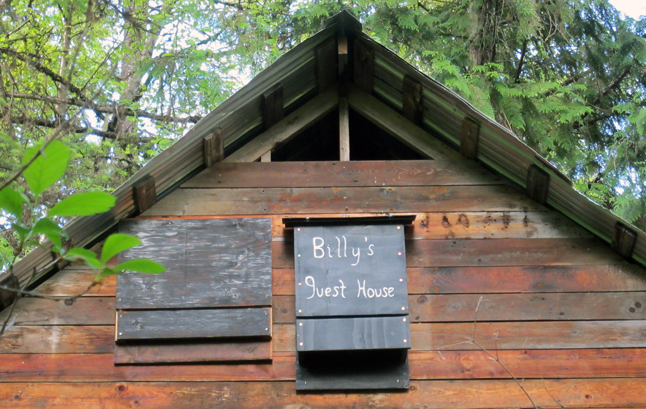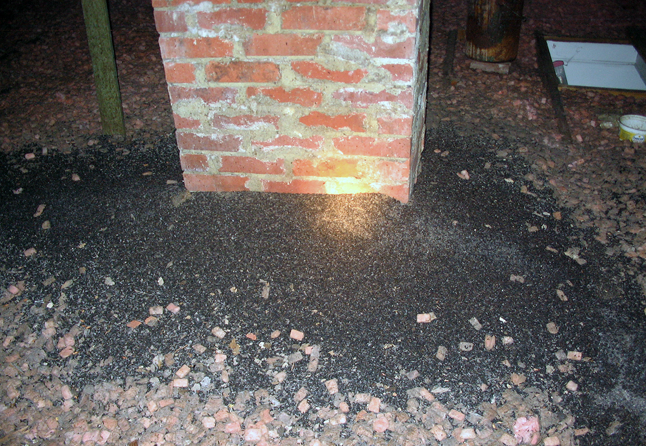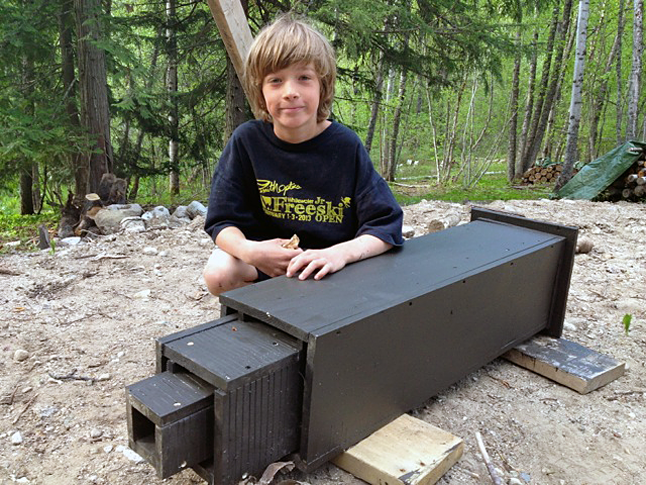
Summer is the season when property owners notice bats in their buildings. They may find guano on the deck, hear bats in the walls, or smell a build-up of guano. The Kootenay Community Bat Project, funded by the Columbia Basin Trust, has received numerous calls with these issues. In many cases, landowners are happy to leave bats where they are. However, for landowners who would like to have the bats move out of their buildings, a new resource guide is available.
“We are pleased to announce the publication of this booklet which we developed in partnership with the BC Community Bat Program” says Juliet Craig, coordinator for the Kootenay Community Bat Project. “Although we try to visit as many properties with bats as we can during the summer, we can’t always get to everyone. This new booklet, funded by the Columbia Basin Trust, Habitat Conservation Trust Foundation, and Habitat Stewardship Program, provides step-by-step information to landowners with bat issues.”
Craig said that under the BC Wildlife Act it is illegal to exterminate or harm bats. In order to get rid of bats, the best strategy is to wait until they have left the building and seal up all the entry and exit points. However, in summer months, bat pups can become trapped inside.
“The conservation of bats in BC has always been important since over half of the species in this province are considered at risk,” Craig said in a statement. “However, the Little Brown Myotis which is a common species in buildings has just been listed as Federally Endangered which means that managing bats in buildings in a sensitive manner is more important than ever.”
In general, bats in the Kootenays leave buildings in the late summer or early fall. They use fall roost sites where they mate and then go into mines or caves to hibernate. Although there is a possibility that bats can use buildings over the winter, it is unusual.
“There are several approaches to managing bats in buildings,” she said. “Some landowners don’t mind having bats and simply leave them be or clean up the guano once a year. Others want to ensure that the bats are no longer able to use the building. We have developed a seven-step guide to assist landowners with these issues.”
One of the most important strategies in excluding bats from a building is to install a bat-house nearby. These wooden boxes comprised of various chambers provide the bats with an alternative habitat. They are less likely to be persistent in entering their old roost site in a building if they have somewhere else to roost.
To find out more and download the “Seven Steps to Managing Bats in Buildings” booklet, visit www.bcbats.ca. To contact the Kootenay Community Bat Project, call 1-855-9BC-BATS ext. 14 or visit www.kootenaybats.com.



